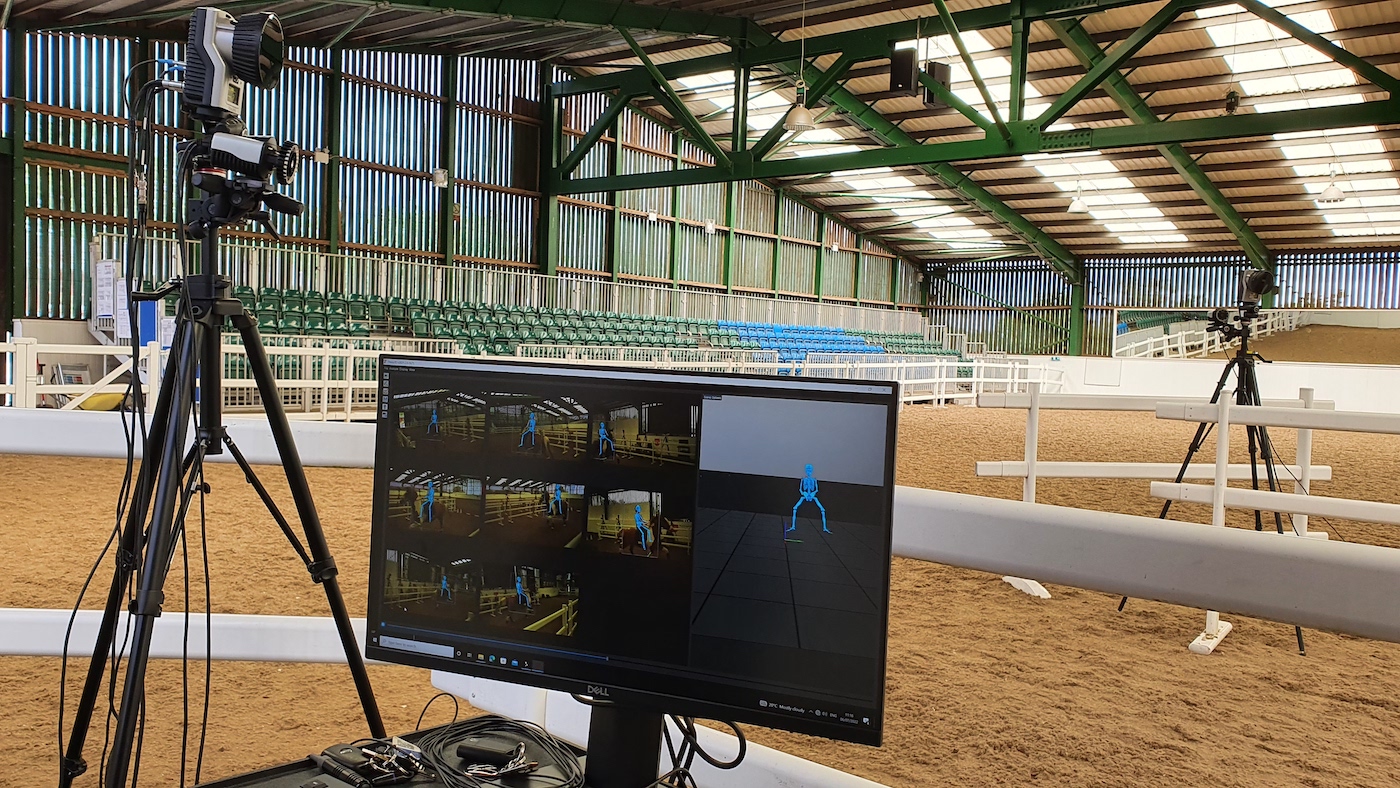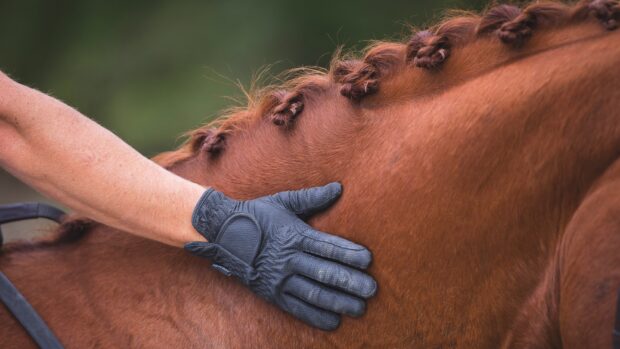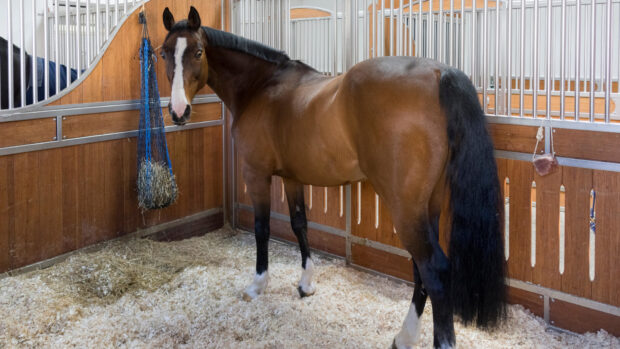New research has found that advanced technology can be used to assess rider biomechanics, raising hopes that the system may be able to help in future projects involving safety, rehabilitation and biofeedback.
The study was led by Heather Cameron-Whytock, course lead in bioveterinary sciences at the University of Central Lancashire, and biomechanics specialist Charlotte Apps from Nottingham Trent University.
They set out to find if artificial intelligence (AI) markerless technology, which is already used in other sports, would work for riders. The system had been trained on humans on the ground, so the starting point was whether it would even recognise a person essentially “bobbing through space”, which it did.
Marker-based systems, whereby reflective markers are attached to specific points on horses and riders, are the current gold standard. Researchers wanted to see if the markerless system could provide comparable data, noting that if it could, it could open the door to facilitating real-world studies of rider kinematics. For example, during competitions where it is not feasible to attach dozens of markers to hundreds of competitors.
The research involved 10 female riders and six horses. The participants rode through a channel, with cameras on either side, and markerless data from the Theia Markerless motion capture system was compared to marker-based results.

They found it was particularly good in some areas, and struggled slightly in others. For example, the results for the transverse plane (rotation) were less accurate, but Dr Cameron-Whytock said this could be down to the camera channel set-up, and that testing different arrangements of cameras is something they would like to try going forwards.
They found it was very good at picking up forwards and backwards motion. It found pinpointing elbows and ankles tricky – as elbows are parallel to the body when riding, and ankles hidden by stirrups. But overall, it showed “really good potential”.
“We’re the first to say, ‘It does work, it is possible,’ and I’m sure other people will now pick up other projects,” Dr Cameron-Whytock told H&H. “I think it’s got serious potential and we’re going to try to do some more work on it.”
She added that in her opinion, such AI technologies are complementary to the human eye and aspect, rather than a replacement.
“I think we’re always going to need an element of human judgement,” she said.
Much of Dr Cameron-Whytock’s research is in eventing safety and horse falls and she said this software could make it possible to capture biomechanic data in real time.
“For example, you could set up the camera system around a fence and have riders jumping it all day,” she said. “If something occurred – even if the horse just hit a fence, or hit a frangible – we could biomechanically analyse that, which has never been [possible] before, because we would have had to stick the markers all over the riders, which obviously you can’t do in competition.”
She added: “It’s important to acknowledge that at the moment, this software isn’t better in its rigour and its validity than marker-based [systems]. But it’s much easier and faster to use. So if we can do further work to really strengthen its validity, I think in certain contexts, it will be much more usable than the current gold standard.”
She also noted that there could be potential for it to give real-time feedback to riders and may also be helpful in rehabilitation from injury – perhaps set up around a mechanical horse – as objective assessment of positioning could be useful.
Dr Apps added that it shows the potential to “take research outside the lab” into real-world settings, ethical considerations allowing, and reduces time and necessity of placing sometimes up to 50 markers on a person.
“I think in future, we’ll probably see more [markerless technology] for all those benefits, but there will still be a place for putting marks on the body sometimes,” she told H&H, adding that as more of these technologies come through, it’s “always important that you try and test how accurate it is against another system”.
- To stay up to date with all the breaking news from major shows throughout 2025, subscribe to the Horse & Hound website
You may also be interested in:

‘We’re delighted to bring loyal readers this benefit’: H&H magazine subscribers get free website access

Study on horse fatalities in eventing shows cross-country jumping falls not the only risk factor

Eventers with poor dressage scores could be blocked from cross-country, as 16 horse fall risk factors identified

Eventing risk profiles could help reduce cross-country falls




